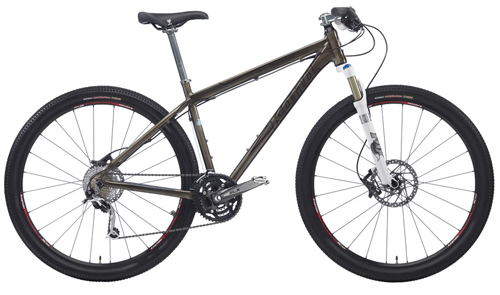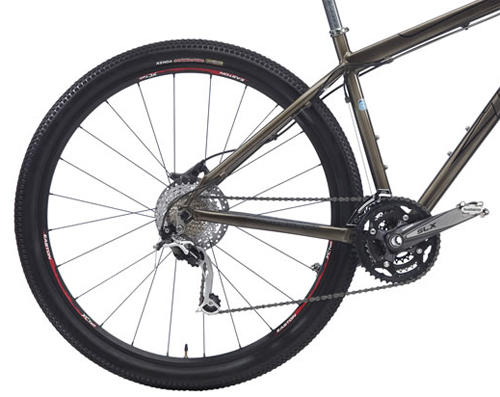By STEPHEN KRCMAR
If you’re looking for a light, cross-country mountain bike that excels at everything but big-hit action, the Kona King Kahuna is an ideal tool. As the flagship model in Kona’s 29er XC line, the Kahuna is decked out with mostly XT components (it also has SLX disc brakes), a scandium frame, and a Fox 80mm fork.
Out of the shop, the bike performs flawlessly. The XT shifting hits every gear, the brakes harness as much power as you need with only a single finger on the lever, and once the fork is tuned it devours everything but the biggest of bumps.

Case in point? I was riding with my buddy down the “Off the Top” trail at Mammoth Mountain, which starts at about 11,000 feet and contains a series of bermed switchbacks for about 1,000 feet of descent. The trail rides fast, and with the overpowered brakes the downhillers often employ, flat sections of yesterday can become where-did-those-whop-dee-doos-come-from of today.
Early in the season, we were hauling down this trail and when we hit some new rutted sections, I just leaned back, jettisoned over ‘em, and kept pedaling harder. At the end of the run, my buddy, who puts in a fair amount of resort days on his full-suspension rig, said, “You were riding that section faster than anyone I’ve ever seen on a rigid bike.”

I wish I could claim that was due to handling acumen. I can’t. The Kahuna is among the fastest and best-performing bikes of its type I’ve ever ridden. And that’s coming from someone who often rides more than 20 bikes in a season.
Although this may be age talking (I’m wind-sprinting towards 40), riding uphill is just as pleasurable. The short triangle ensures that when you jump on the cranks, the bike almost beats you to the punch.
Get the 29-inch wheels rolling and experience Newton’s Second Law of Motion on steroids: An object in motion stays in motion and often accelerates on its own, regardless of how many babyheads and drops are in front of it.
New for 2010, the bike has an internal headset, of which the company says, “By having the headset bearing located inside the head tube, rather than the top and bottom, you’re able to achieve a whole array of advantages when it comes to front-end stiffness and overall performance.”








